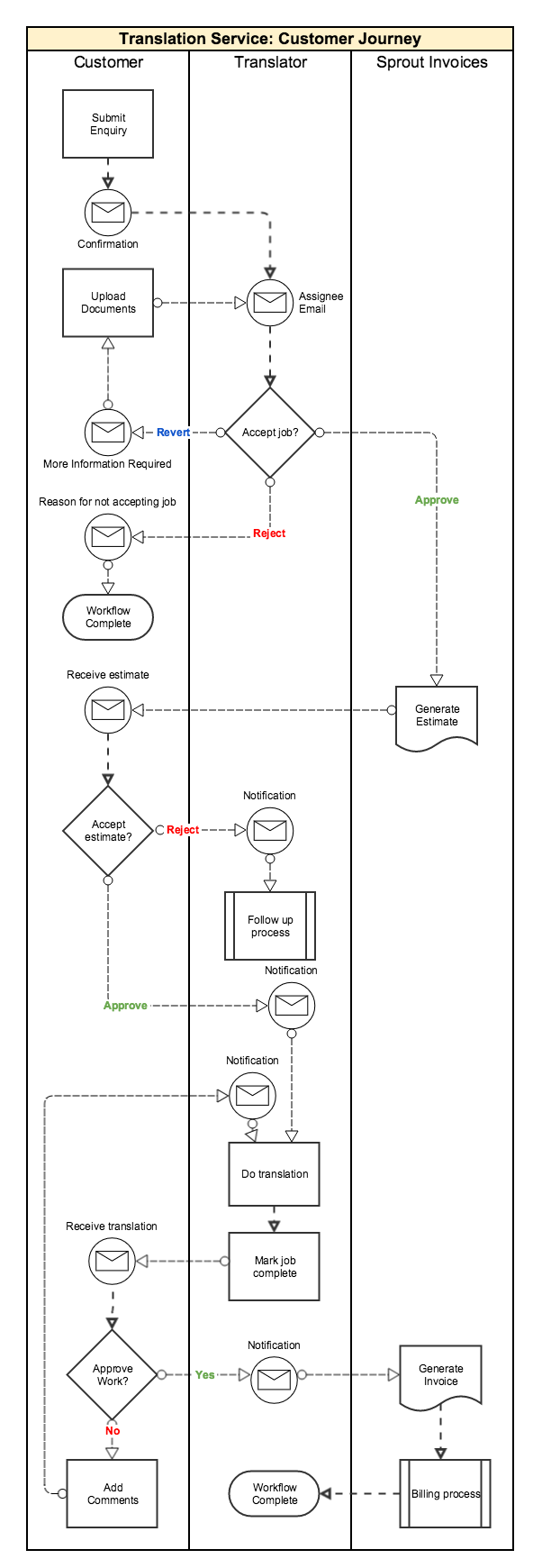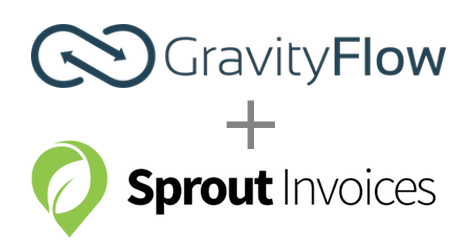
Gravity Flow version 1.5 is now available via auto-update and for download from the account page.
This is a feature release that includes support for Sprout invoices, quick approval buttons for the inbox, field mapping for the Outgoing Webhook step and settings to specify default inbox and status pages.
Integration with Sprout Invoices

Gravity Flow now includes built-in support for Spout Invoices. Administrators can add workflow steps at any point in the process to create estimates and invoices at a time of their choosing.

With the Sprout Invoices Workflow Step you can now take customers on a complete journey all with a single form.
Here’s an example of a simple customer journey for a translation service:
- Initial enquiry
- Send documents to be translated
- Approve cost estimate and wait for translation
- Approve translation or request changes
- Pay invoice
The swimlane diagram for the complete process looks like this:
Every time a Sprout estimate or invoice is generated it is reflected in the timeline.
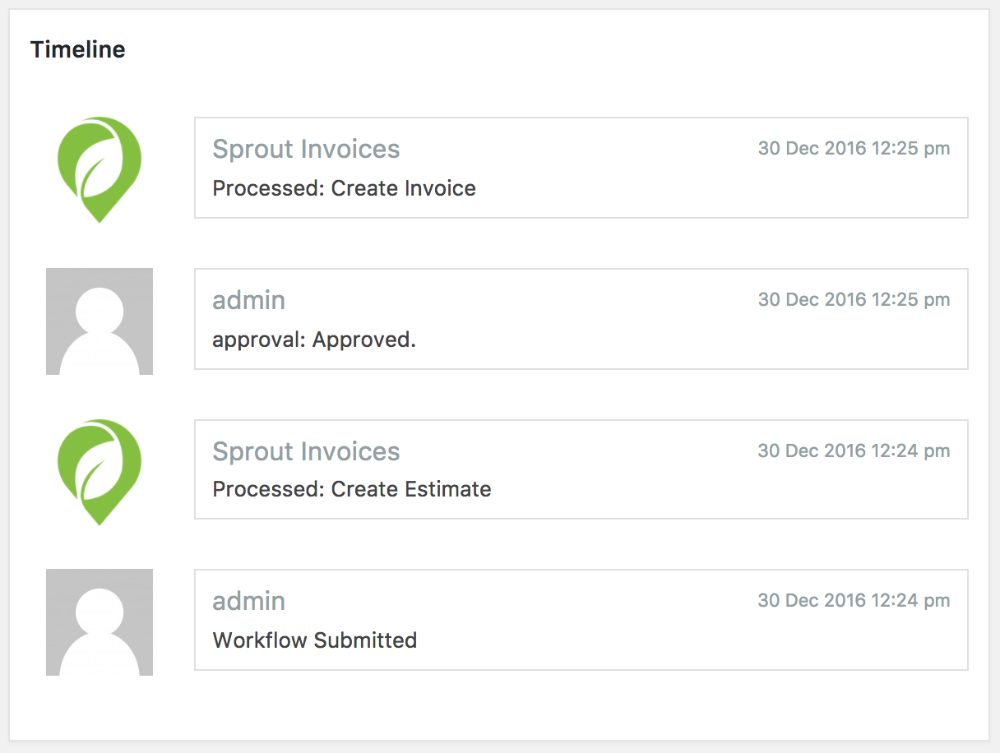
Further details in the documentation.
Quick Approval Actions
Assignees can now approve or reject entries directly from the inbox without having to open the entry details. Double-clicking will approve or reject. Click once to unlock the action buttons for 2 seconds. Add the following attribute to the inbox shortcode to enable.
actions_column="true"
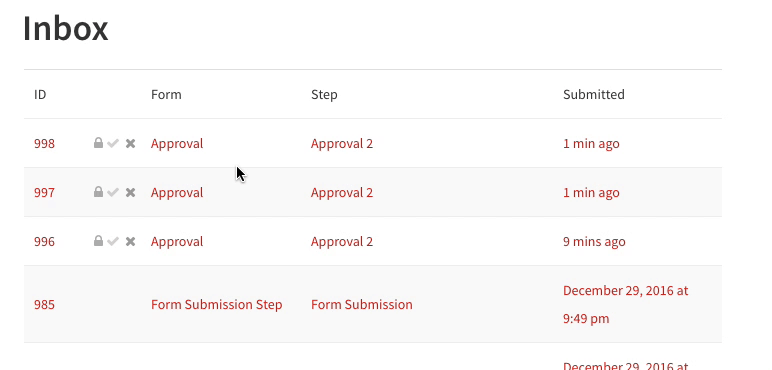
Field Mapping for the Outgoing Webhook step
The Outgoing Webhook step is a technical feature but you don’t need to be a developer to understand the power it can add to your processes.
The Webhook step has been built-in to the Gravity Flow core since its release back in October 2015 and it’s the easiest way to add webhooks to Gravity Forms and to send form submission values to an external service or application.
In Gravity Flow v1.5 now you can specify which field value to send in the Webhook step. Add custom values and keys. Merge tags are supported.

When the above Webhook step is reached the following request will be sent to the URL in the settings.
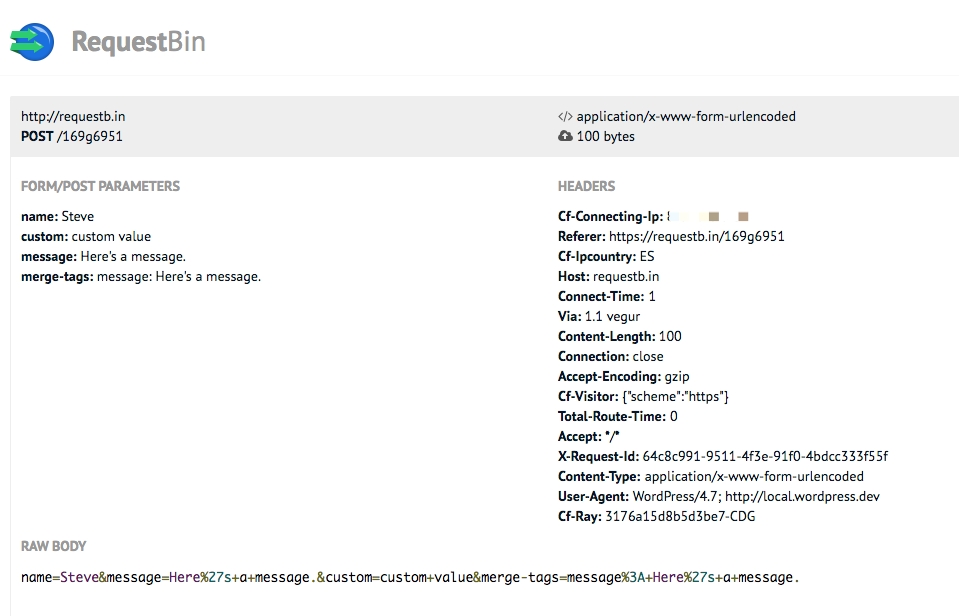
Default Inbox, Status and Submit Pages
In Gravity Flow v1.5 you can now specify the pages that will be used as the default inbox, status and submit pages. This makes workflow merge tags much easier to add as you don’t need to add the page_id. Of course if you want to point the user to a different page then you can use the page_id merge tag attribute to override the default.
Here’s an example of before an after the v1.5 update:
Before: {workflow_inbox_link: page_id=”12″}
Now: {workflow_inbox_link}
This is going to make step configuration much easier and faster.
Look out for the new settings in the Workflow setting page.
What’s New In Gravity Flow v1.5
– Added support for configuring a step to process feeds for the upcoming Gravity Forms Post Creation Add-On.
– Added support for configuring a step for Sprout Invoices. Requires the Sprout Invoices Form Integrations add-on (creates estimates) and/or Invoice Submissions add-on (creates invoices).
– Added settings to the Workflow > Settings page for selecting which pages contain the gravityflow inbox, status and submit shortcodes. The selected inbox page will be used when preparing merge tags such as {workflow_inbox_link} when the page_id attribute is not specified.
– Added support for shortcodes in the step instructions.
– Added the gravityflow_pre_restart_workflow action.
– Added field mapping to the Outgoing Webhook step.
– Updated the step type column of the workflow steps list and the step configuration page to indicate when a plugin required by a feed based step type is missing.
– Fixed merge tag labels not being translatable.
– Fixed an issue with the inbox where field values are not displayed correctly when custom code uses the gform_entries_field_value filter.
– Fixed an issue with poor admin performance on some sites where W3TC is installed and object caching is enabled.
